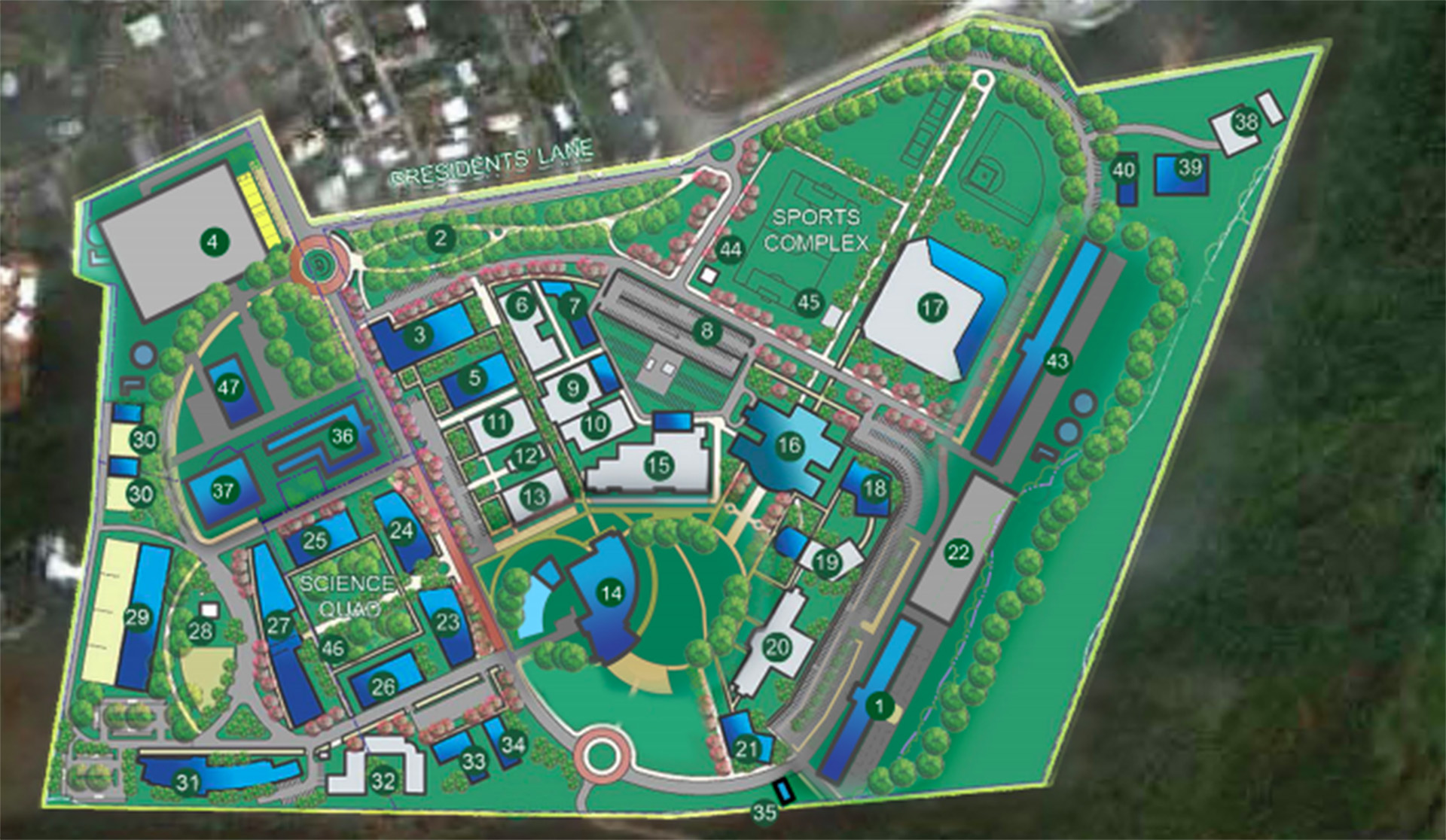The Division of Math and Computer Science does not have a centralized building. With widespread classroom and faculty office locations, the department is separated and often looking for more space.
“We’re probably one of the most distributed departments,” said Leslie Aquino, associate professor of Math, PhD. “We can kind of think of Warehouse B as our home, but it just doesn’t contain all our instructors and does not accommodate most of our classes.”
The warehouse annexes were built to accommodate the growing department in the 1990s, but today, enrollment in math courses is only increasing.
According to Aquino, the class size for math is 25, but many core classes are overloaded due to necessity and the department services many UOG students because of General Education requirements.
“Our numbers for these core courses that are required for STEM majors has been increasing each semester,” said Aquino.
Currently, classes are held in the warehouse annexes, the Kubre building, the Science building, and the Agriculture and Life Science Buildings. The department looks to other buildings around campus when they need more space.
Aside from the warehouses being too small for the department, they are also in need of repair. They recently added automatic doors to both buildings and are scheduled for renovations to harden them. But, the main problem still is that there is not enough space.
The University does have a math building in its Vision 2025 – a master plan for the future infrastructure of UOG.
Randall Wiegand, vice-president of administration and finance, says the Student Center and Engineering building are the first on the list for construction. Funds have already been allocated for these two buildings and they were prioritized with the Good to Great process.
“[The G2G initiative] caused us to take a look at what we’re doing and try to focus,” Wiegand said. “The Student Center is old; it’s really been seriously in need of repair. It’s the one place where students will probably spend time, except for the classroom.”
According to Wiegand, the Engineering building was chosen next for construction because of the new establishment of the four-year program and monetary support from community corporation advocates.
Wiegand said: “It seems like that’s just a missed market for us and so that became a move that the legislature [supported] and that’s why they were willing to commit to the building. There is a desire to meet that unmet need.”
Next on the list for the Vision 2025 are the Triton Engagement Center and the Fine Arts building and theater, which support community and campus needs.
Wiegand agreed with the necessity for a centralized math building. “Now, on the other hand, we realize that there’s a big need for the STEM subjects. The demand has completely changed.”
According to Wiegand, the legislature ultimately funds infrastructure improvements. The University also gets money through loans from USDA and stakeholder donations given to the Endowment Foundation.
However, graduates of the math department don’t normally have higher salaries, which create an issue for funding through donations.
According to Katrina Perez, Endowment Foundation accounts manager, 59% of budget allocation is based on the donor’s special interests and only one percent of their donations go towards the College of Natural and Applied Sciences, which is allocated for scholarships, not infrastructure.
Aquino weighed in on the lack of available donors: “You’ve got teachers; you’ve got folks who are doing statistics or other types of analysis work. Some of our students go off and do other things. So I think the way to build that is to build connections across to other disciplines that we support.”
Although the Vision 2025 is already underway, it is likely that it will not be fully completed by 2025 due to lack of money.
“Funding is going to be a problem,” Wiegand said. “We had the aggressive plans for the University and now we’re running into this crisis [with the] tax reform package that just went through Congress. It’s going to be awhile.”
With plans delayed, and the math building not at the top of the list for construction, the department does not know when it will get a centralized building.
“It seems to be part of the vision plan, the question is where is the priority and the budget,” Aquino said.

